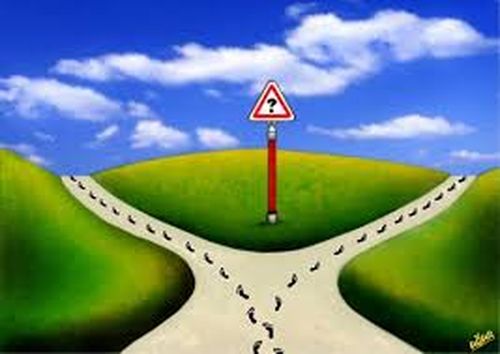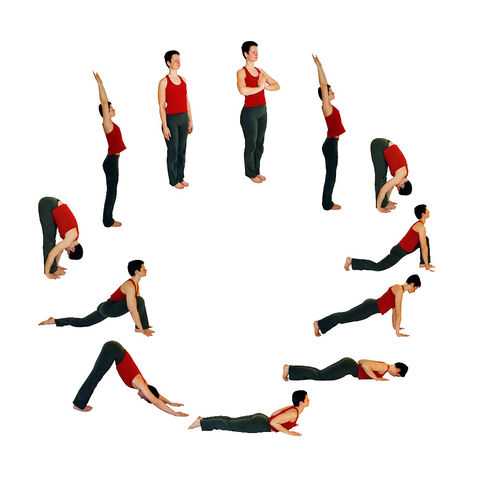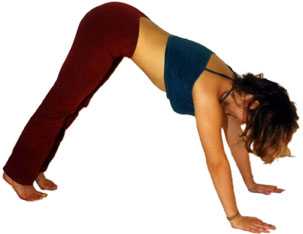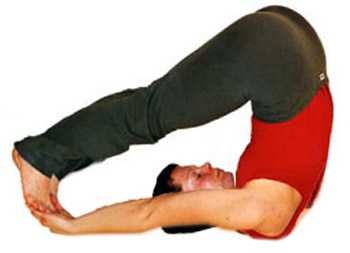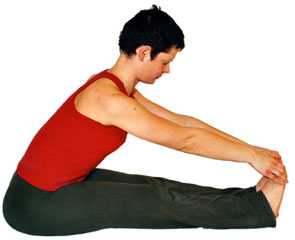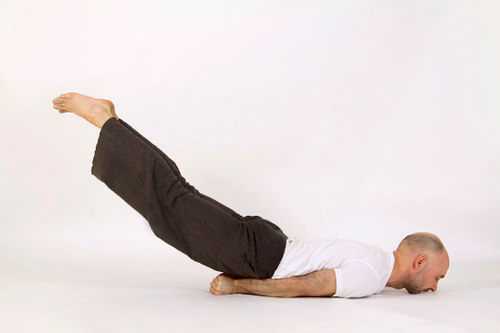

Exercise Sequence for Beginners
Adapted for beginners, with special attention to the needs of the back and neck. This ancient so-called «Rishikesh Series» was popularized by the Indian master Swami Sivananda, who lived in Rishikesh. The version as taught by Swami Vishnu-Devananda and slightly modified by Sukadev Bretz is the Yoga-Vidya Series. In addition, I added the «Cross Asana» at the beginning. You should take around 45-90 minutes for this full program.
Table of Contents
Motivation
Exercise Sequence
The first third
The second third
The rest
Motivation
The relaxation, the breathing and the «Cross» at the beginning are still easy to carry out. But after the «Sun Salutation» it becomes exhausting, especially for those who have not yet built up the necessary muscles, who are a bit more complete or who are smoking. At the moment, as a new beginner, I (55 years old, smoker and 98 kg fighting weight) said to myself during the first video of the «Sun Salutation» after two rounds: «Thank you. Enough!!!» Nothing with six rounds, after two rounds I was completely out of breath. But at the moment I have already reached three rounds.
So: Initial Relaxation → Breathing Exercises → Cross → three rounds of Sun Salutation → Final Relaxation (after that I still do a Sitting Meditation, which usually lasts about 1 hour). I think this short Yoga Sequence is sufficient at the beginning. It's fun that way and you are not overwhelmed. In the course of time you can then add one exercise after the other, taking into account the corresponding opposing position in this regard.
If western medicine also calls it superstition, but the health properties that are given for every Yoga Exercise actually work. In Tibet, doctors used to be paid while you were healthy, and only after you got sick did they have to work free of charge. I believe that in such a system, if people had practiced Hatha Yoga, but those few doctors made a lot without doing anything, fewer doctors would be needed in such a system. The health aspect alone is, I think, reason enough to practice Hatha Yoga.
However, Hatha Yoga also has a motivation in itself, and that is then when you notice that these knots are actually workable. For example, it is a feeling of achievement when you actually reach the «Headstand» for the first time. Just getting up on your upper arms with your knees is an experience like «free falling», although you shouldn't «fall». Or if your toes touch the ground for the first time into the «Plow». The little senses of achievement that every exercise brings with it after a while increases the motivation and makes you happy. I know this from my own experience, as I already practiced Hatha Yoga around 25 years ago.
If an exercise is difficult, however, one should overcome one's weaker self and make a determination to do it: «Tomorrow I will do the Headstand and I will do it, no matter how often I fall over !!!». However, you should not use the «principle of forcing», but only complete an exercise when you are ready for it, that is, when you have built up your muscles accordingly. You should take time for each exercise and do it slowly and consciously. Be fully aware of what you are doing and what you are not doing. Better not do the whole series in 45 minutes, but rather in 180 minutes.
Okay, I think that's enough for now. Are you ready to begin?
Sequence of Exercises
The following are the exercises in their order, similar to how they can be found on https://www.yoga-vidya.de/de/asana/rishikeshfortanfaenger.html. Just click here on the picture to get to the explanations that are available.
The first third
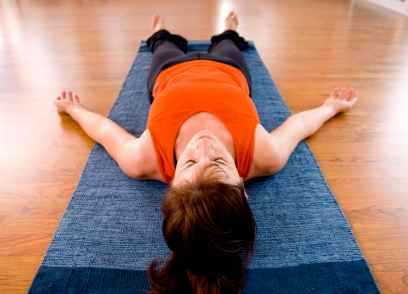 1. Initial relaxation:
1. Initial relaxation:
1-5 minutes
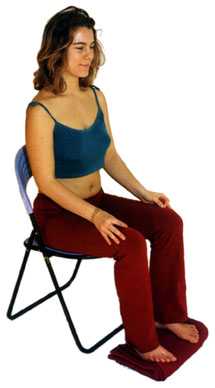 3. Kapalabhati:
3. Kapalabhati:
Heel seat or cross-legged seat or on the chair.
3 rounds: 20, 30, 40 exhalations. Holding for 30, 45, 60 seconds
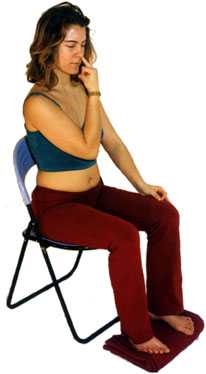 4. Alternate breathing:
4. Alternate breathing:
5-10 rounds. Rhythm 4 : 8 : 8 or 4 : 12 : 8
 5. Relaxation while lying down: 1 minute
5. Relaxation while lying down: 1 minute
 7. Intermediate relaxation:
7. Intermediate relaxation:
Always between 2 exercises. 5-12 breaths or until the breath is calm again.
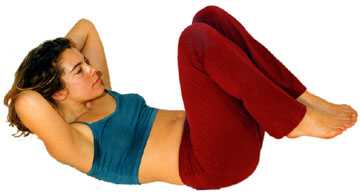 8. Abdominal muscle exercise:
8. Abdominal muscle exercise:
About two times for 30 seconds.
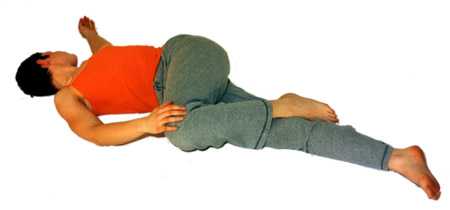 9. Crocodile turning exercise:
9. Crocodile turning exercise:
About 1 minute each side.
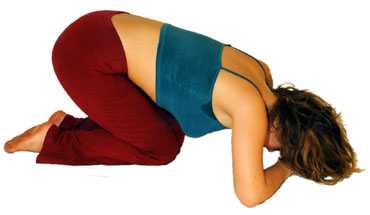 10. Position of the child:
10. Position of the child:
5-8 breaths
The second third
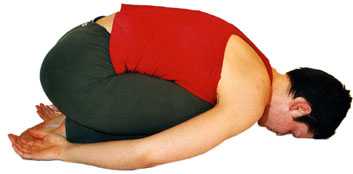 12. Position of the child:
12. Position of the child:
5-8 breaths
see also point 10
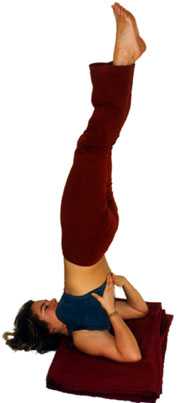 13. Shoulderstand:
13. Shoulderstand:
1-2 minutes
 15. Fish:
15. Fish:
30-60 seconds (half as long as shoulderstand)
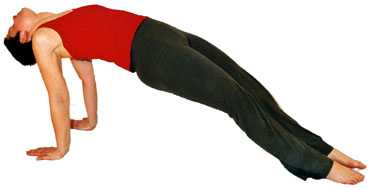 17. Inclined plane:
17. Inclined plane:
20-30 seconds
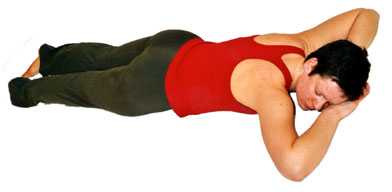 18. Abdominal relaxation:
18. Abdominal relaxation:
Before or after every back bend.
6-10 breaths
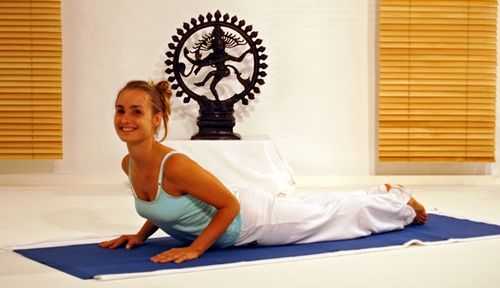 19. Kobra:
19. Kobra:
2-3 times for 30 seconds or once for 1-2 minute
The rest
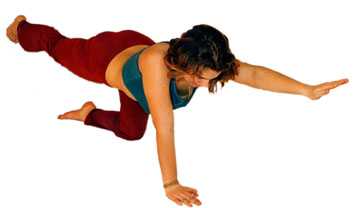 21. Cat:
21. Cat:
1-3 times on each side
 22. Position of the child:
22. Position of the child:
6-10 breaths
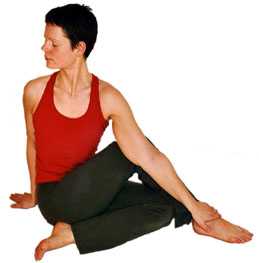 23. Twisted seat:
23. Twisted seat:
1-2 minutes each side
 24. Standing posture with eyes closed:
24. Standing posture with eyes closed:
For 30-60 seconds
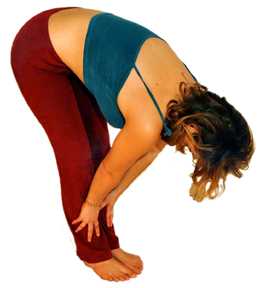 25. Standing forward bend:
25. Standing forward bend:
30-120 seconds. With knees slightly bent
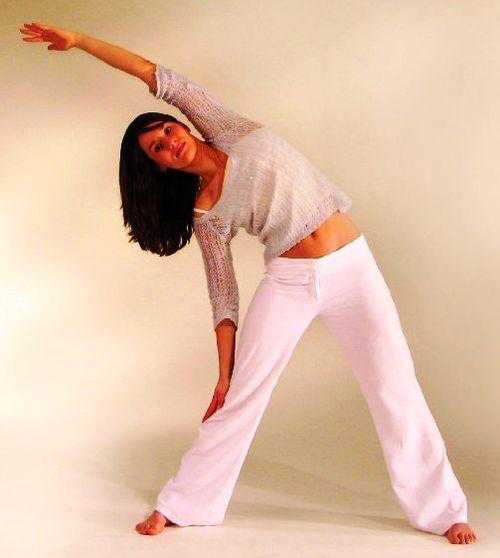 26. Triangle:
26. Triangle:
Each side 30-45 seconds
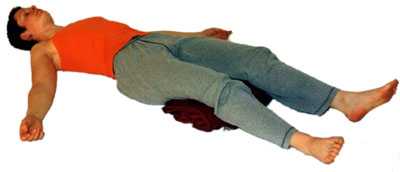 27. Deep relaxation:
27. Deep relaxation:
Blanket or pillow under the knee or thigh.
10-20 minutes. Steps: Tense parts of the body, let them relax. Autosuggestion. Mental relaxation. Visualization.
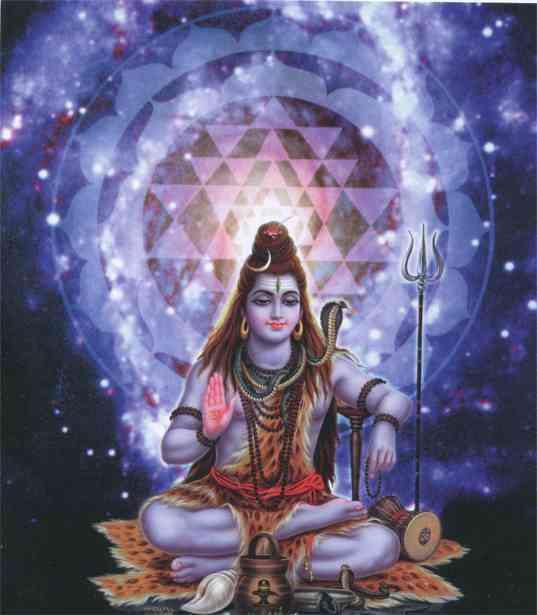 Meditation
Meditation
Om Namah Shivaya
Good luck and all the best!!!

